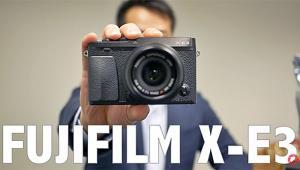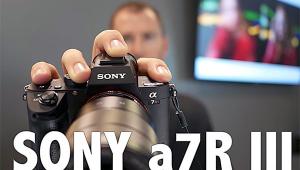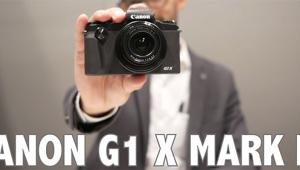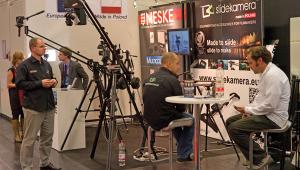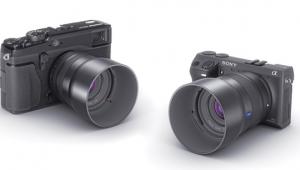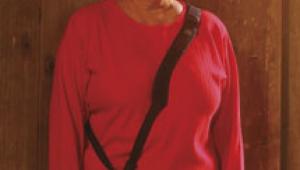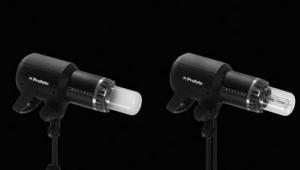Some Niches, At Best
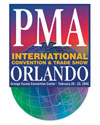 The
important thing to remember about the PMA Show is that it is the annual convention
of the Photo Marketing Association. This organization exists to help sell product,
whether the product in question is cameras, lenses, scanners, studio backdrops,
or indeed photographs.
The
important thing to remember about the PMA Show is that it is the annual convention
of the Photo Marketing Association. This organization exists to help sell product,
whether the product in question is cameras, lenses, scanners, studio backdrops,
or indeed photographs.
Pretty much by definition, this means going for the markets that are biggest
or most lucrative, or preferably both. It does not necessarily mean catering
to enthusiasts or to those whose primary considerations are fine art or ultimate
quality (or preferably both). Those of us whose interests lie in those directions
are there pretty much on sufferance or at best because we might just make up
a big enough market to be worth considering as a niche.
Admittedly, some of the niche markets that are catered to by PMA are pretty
specialized. How does a UV enclosure for forensic photography sound? Cindy Lichfield
of Cloud Dome was there with a prototype of just such a product. And one of
our good friends from military intelligence--whom I would prefer not to
name for obvious reasons--was there on the military's nickel looking
at portable high-resolution imaging systems.
But nowadays, medium format and large format--the first part of my brief--just don't cut it in the mass-market stakes. Even though it is disputable whether a 22-megapixel camera can really compete on image quality with 35mm, let alone roll film, a lot of studios have gone digital on the grounds of speed alone. As the old advertising joke has it, "I want it yesterday! If I wanted it today, I'd ask tomorrow!"
Medium Format
As a result, the nearest there was to a new medium format camera was the Rolleiflex
4.0FW twin-lens reflex with a 50mm f/4 Schneider Super Angulon: those with long
memories or deep pockets or both will notice that this is slightly wider than
the original Rollei-Wide which sported a 55mm Zeiss Distagon. I have to confess
that I have never got on with TLRs but I regard this as a shortcoming in myself
rather than in these sturdy and widely admired machines. I'd rather have
an Alpa with a 58mm lens and a 6x9cm back but the Rollei is cheaper at a mere
$5000 or so.
 |
 |
||
|
|
Despite the dearth of new introductions, plenty of old workhorses soldier
on, such as Hasselblad's seemingly immortal 500 series, the chunky old
Pentax 67, Rollei's ultrahigh-tech 6000 series, now with autofocus, the
Pentax 645, and the more recent Contax 645 and Hasselblad 645 models. Certes,
I'd rather have no news about these cameras (except the reassurance that
they are still in production) rather than see them remade for the sake of a
new look. Of course, fully integrated digital backs (usually 22 megapixel) have
been fitted to as many of them as possible, with Hasselblad winning the prize
for backward compatibility--you can easily stick the 16-megapixel, $9795
Ixpress V96C digital back on a 50-year-old 500C--and Rollei coming out
ahead, at least in my book, for the maximum versatility with an autofocus system.
One thing that had not occurred to me, however, is that one of the reasons why
it may not be economical to manufacture medium format cameras in short runs
is ever-harsher environmental regulations. Things that sound really silly, like
the lead in soldered joints, can require enough environmental compliance to
tip the balance and put even a well-loved camera out of production.
On the bright side, there is no sign of the imminent demise of film--indeed,
there were new introductions, as Frances Schultz reports, and Ilford is happily
back in business--and with a glut of used medium format cameras on the
market there has never been a better way to buy secondhand; preferably from
a Shutterbug advertiser of course!
Also, mechanical (as distinct from electronic) medium format cameras aren't
that hard to build, and if the price of used cameras goes high enough, someone
will start making new medium format cameras or re-introducing old ones. Besides,
there are quite a lot of people making specialist cameras at many price points
in the market, from the sublime Alpa (whose advertising line is "Things
are simple at the top") to the astonishingly affordable Fotoman, though
none of these was to be seen at PMA.
Large Format
Unlike, to my glad surprise, a new 4x5" camera, the Layton. In all fairness,
the beautifully crafted, all light alloy Layton was hiding on the BetterLight
stand as a platform for the superb BetterLight scanning digital backs. BetterLight
backs deliver truly vast files: the top of the line Super 10K-HS ($22,295, and
only just entering production) delivers 13,800x10,200 pixels, for an 852MB scan.
Such monster files genuinely do outperform not just 4x5" film but also
8x10" film. Even the base model
4000E-HS (5000x3750 pixels) starts at around $6500. A BetterLight back is a
serious investment, but if I could afford one, I think I'd have one.
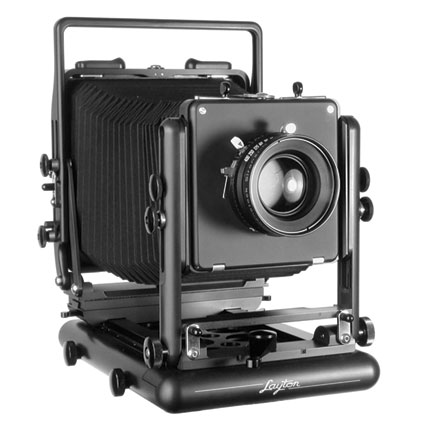 |
|
|
But to return to the Layton, it really is an extremely nice camera with a massive 24"/600mm maximum bellows extension (interchangeable with a bag for ultra wides), generous and cleverly controlled movements (the back cross/swing is particularly ingenious), and a very high standard of finish. It reminds me more than anything else of the Carbon Infiniti of some 20 years ago, with its distinctive looks and built-from-the-ground-up design. The only thing I might say against it is that like the Carbon Infiniti the Layton is so original and innovative that it may frighten some people away, leaving it with cult status but insufficient customers. I hope that this will not be the case and that it will do well.
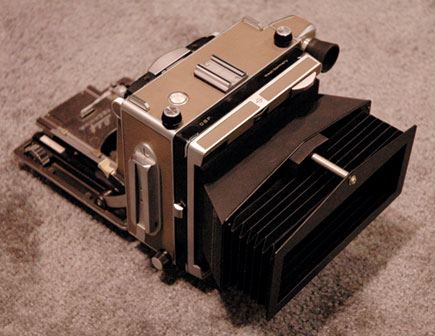 |
|
|
Still in the realm of large format, there was a very clever 6x17cm back for
4x5" cameras on show at the KT (Kang Tai) stand. Now, given that 5"
is about 12.7cm you may wonder how this is possible, but it's simple enough.
With a wide angle lens--something in the 72-121mm range, I would guess,
though some cameras might allow you to go as wide as 58mm (if it will cover)
or as long as 135mm--you can make a tapered adapter that avoids cutoff.
There was no US importer, but someone should pick this up, or you can order
it directly from the manufacturer, who also makes one of the best long loupes
I have ever seen for examining focus on the ground glass of a large format camera
and an excellent range of adapters for putting one maker's lens on another
maker's body: for example, Leica's Visoflex on the Pentax 645. Fotodiox
offered a similar range of adapters.
- Log in or register to post comments
